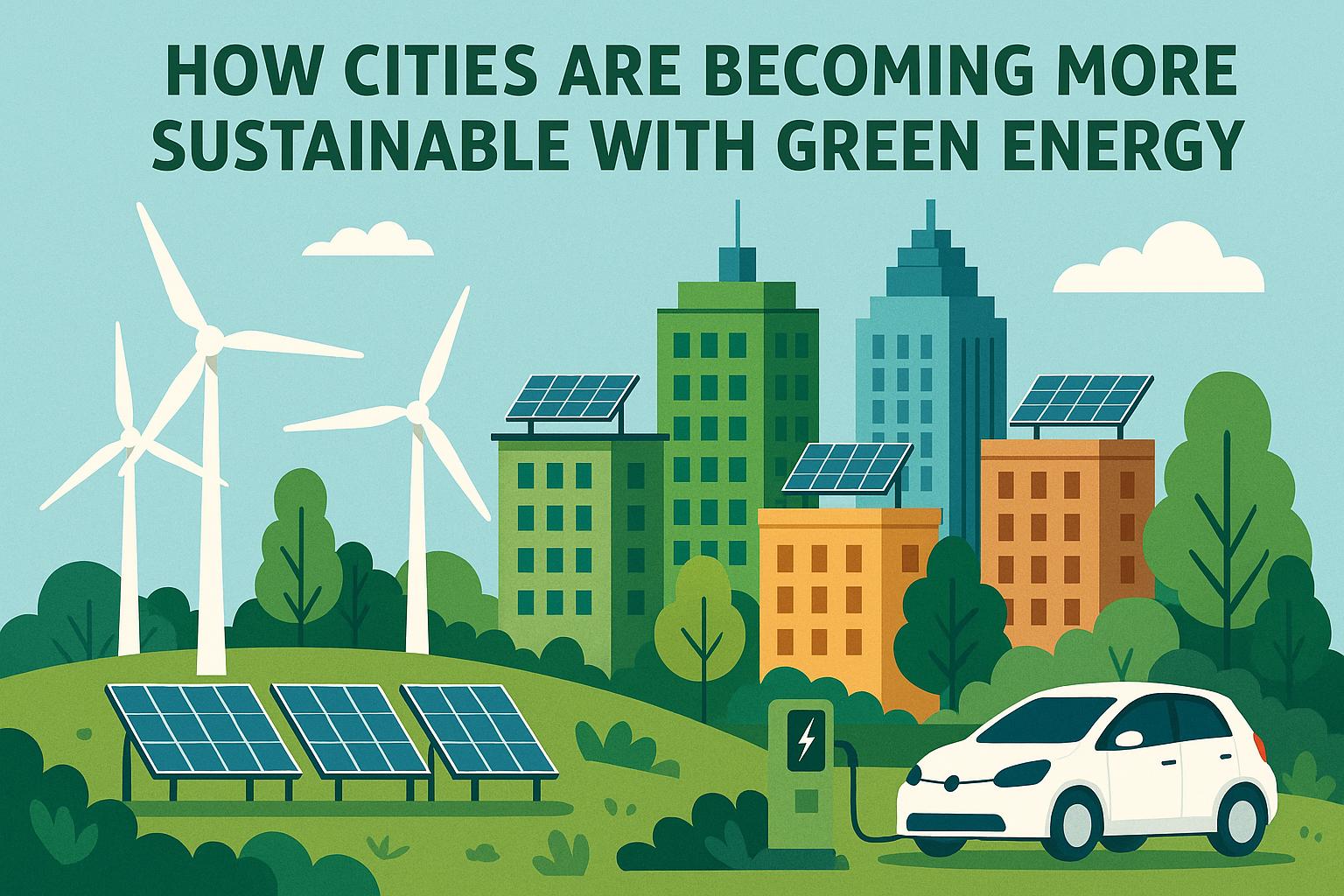
Introduction to Urban Sustainability and Green Energy
Urban areas around the globe are increasingly adopting sustainable practices as they address the challenges of climate change and environmental degradation. Among these practices, the transition to green energy has gained significant attention. Cities are major energy consumers, accounting for a sizable portion of global electricity use. Consequently, incorporating renewable energy sources is crucial for reducing urban carbon footprints and fostering a healthier environment.
Cities are not only growing at an unprecedented rate, but they are also evolving into hubs of innovation that can set the stage for sustainable practices globally. As urban populations rise, so does the consumption of resources like electricity, water, and fuel. This creates a pressing need to transition towards more sustainable energy systems built primarily on renewable resources. Such a transformation is not just an environmental necessity but also an economic opportunity, opening new pathways for job creation and technological advancements.
Renewable Energy Sources in Urban Settings
Urban environments offer unique opportunities and challenges for the deployment of renewable energy sources. The density of buildings and high energy demands make cities ideal test beds for innovative energy solutions. Among various renewables, solar power stands out for its potential in urban settings. The extensive rooftops on residential and commercial buildings can be optimally utilized for installing photovoltaic panels. These panels harness sunlight efficiently, converting it into electricity that can decrease dependency on non-renewable energy sources. The adoption of solar power also offers financial benefits, as it can reduce electricity bills and provide a hedge against fluctuating energy prices.
Wind power is another renewable energy source integrated into urban landscapes, although its application is more challenging due to space constraints and aesthetic concerns. Recent technological advancements have fueled the creation of small-scale, quieter urban wind turbines designed to operate in complex city environments. Such innovations allow wind energy to complement solar energy, providing a diversified energy mix that enhances overall energy security.
In some urban centers, geothermal energy is leveraged to meet heating and cooling needs. This involves tapping into subterranean heat sources to supply district heating systems, a method particularly effective in areas proximate to geothermal resources. The deployment of geothermal energy systems can significantly reduce greenhouse gas emissions by minimizing reliance on fossil fuels for space heating and cooling.
Innovative Technologies and Infrastructure
The realization of substantial gains in green energy usage requires adopting new technologies and upgrading infrastructure. A vital component in this transition is the development of smart grids. These advanced energy networks enable more reliable and efficient distribution of electricity, ensuring that renewable energy sources are used optimally. Smart grids incorporate real-time data analytics to match supply with demand dynamically, promoting energy savings and increasing the reliability of the energy system.
To complement these grids, the evolution of energy storage systems plays a crucial role. The intermittent nature of solar and wind energy generation necessitates robust storage solutions to ensure a stable energy supply. Technologies such as lithium-ion batteries, which are already well integrated into urban energy systems, provide efficient storage solutions. They store surplus energy generated during peak production periods, making it available when demand is high, thus smoothing out energy supply and enhancing grid stability.
As new materials and technologies emerge, energy storage is expected to become more efficient and less costly. Innovations in battery technology, such as solid-state batteries and flow batteries, are on the horizon and could significantly alter the energy storage landscape in urban areas.
Policy and Collaboration
The successful transition to green energy requires more than just technological solutions; it needs robust policy frameworks and collaborative ventures. Local governments are instrumental in promoting green energy through various incentives and regulations. For example, they might offer tax credits, subsidies, or feed-in tariffs to incentivize the adoption of renewable technologies. Policies can also mandate energy-efficient building codes, support electric vehicle infrastructure, and encourage the development of public transportation systems powered by clean energy.
Furthermore, effective collaboration between public entities and the private sector is essential to overcome financial and technical barriers. Partnerships that bring together city planners, energy providers, technology firms, and non-governmental organizations can foster creative solutions and catalyze investment in sustainable energy projects. Public-private collaborations can also drive innovation through the sharing of knowledge, resources, and expertise.
Challenges and Opportunities
Transitioning urban centers to green energy is not without its challenges. One of the primary obstacles is the significant financial investment required for large-scale renewable energy projects and the upgrading of existing infrastructure to support new technologies. Moreover, retrofitting older buildings with energy-efficient systems can be particularly challenging due to architectural and structural constraints.
Nevertheless, these challenges open up avenues for growth and development in various sectors. Innovations in energy-efficient building design and retrofitting techniques are evolving rapidly, offering solutions that enhance urban energy sustainability. In addition, emerging fields such as green urban planning emphasize the integration of nature into city landscapes, promoting biodiversity and improving air quality.
Urban centers have the unique opportunity to lead by example, demonstrating how dense population areas can be transformed into models of sustainability. By doing so, cities can tackle some of the most pressing environmental issues while simultaneously creating economic opportunities and improving the quality of life for their inhabitants.
Conclusion
As cities continue to explore and implement green energy solutions, their role in achieving global sustainability targets becomes increasingly vital. By adopting clean energy technologies and optimizing infrastructure, urban centers can lower their environmental impact significantly. This not only aids in combating climate change but also supports economic and community development.
The path to a more sustainable urban future relies on collaboration among governments, businesses, and local communities. As technologies advance and become more economically viable, the potential for further sustainable progress in urban areas becomes substantial. With concerted efforts and innovative thinking, cities can indeed become the cornerstone of a sustainable energy future, setting a precedent for global environmental stewardship.